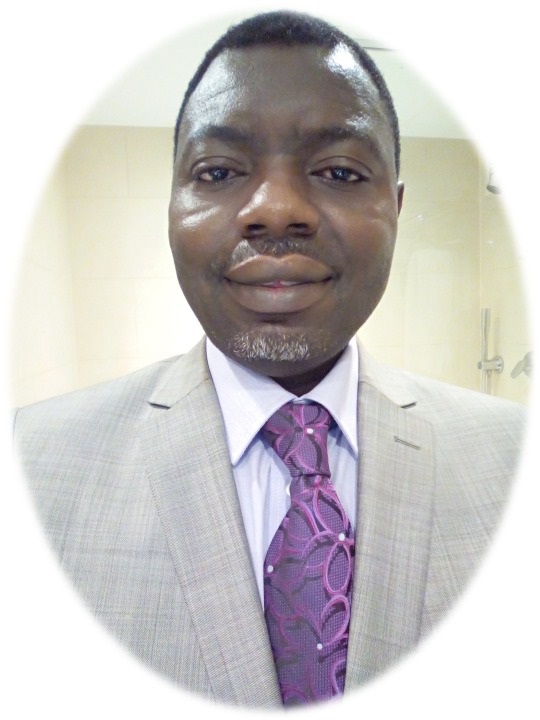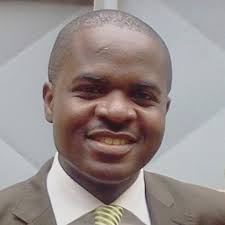Place des échographies réalisées par les urgentistes
DOI:
https://doi.org/10.55715/jaim.v11i4.52Keywords:
Echographie, urgentiste, hémothorax, pneumothorax, hémopéritoine, hémopéricarde, TogoAbstract
Objectifs : évaluer l’intérêt de l’échographie portable intégrée à l’examen clinique comme un outil d’aide diagnostique pour les urgentistes dans la prise en charge des patients. Matériel et méthodes : étude descriptive et analytique sur une période de 50 mois.Résultats : Au cours de la période étudiée, nous avons recensé un total de 74 cas dont 44 cas de traumatismes de l’abdomen, 18 cas de traumatismes du thorax et 12 cas de polytraumatismes. Les examens d’échographie ont été considérés comme utiles dans 41 cas (55,4%), et avaient donc permis de modifier le traitement initialement envisagé dans 8 cas de traumatisme de l’abdomen. La concordance des résultats avait été jugée bonne pour toutes les échographies (Kappa=0,62), moyenne pour les échographies pleuropulmonaires (Kappa=0,53), excellentes pour les FAST échographies (Kappa=0,83) et moyenne pour les EFAST échographies (Kappa=0,43).En ne prenant en compte que les examens qui ont été comparables, les résultats des urgentistes ont étéconsidérés comme concordants dans 71,4% (40 cas) et non concordants dans 21,4% (12 cas). Parmi les 74 échographies effectuées, 29 ont été réalisées par les urgentistes en cours de formation à l’échographie et 45 par les urgentistes formés ; on avait observé un taux de concordance de 60% chez les urgentistes en cours de formation et de 80,6% chez les urgentistes formés.
Conclusion : L’échographie pratiquée par les urgentistes est utile et fiable pour une meilleure prise en charge des patients aux urgences car elle peut modifier le diagnostic initial et donc modifier le traitement.
Downloads
References
Schrager JJ, Branson RD and Johannigman CJA. Lessons From the Tip of the Spear: Medical Advancements From Iraq and Afghanistan. Respir Care 2012;57(8):1305–13.
Woolley T, Badloe J, Bohonek M, Taylor AL, Heier HE and Doughty H. Nato Blood Panel perspectives on changes to military prehospital resuscitation policies: current and future practice. Transfusion. 2016; 56:S217-S223.
The ATLS Subcommittee, American College of Surgeons’ Committee on Trauma, and the International ATLS working group, Chicago, Illinois. Advanced trauma life support (ATLS\): The ninth edition. J Trauma Acute Care Surg 2013; 74 (5):1363-6.
Duranteau J, Asehnoune K, Pierre S, Ozier Y, Leone M, Lefrant JY et le groupe de travail de la Société Française d’Anesthésie et de Réanimation (SFAR), de la Société de Réanimation de Langue Française (SRLF), de la Société Française de Médecine d’Urgence (SFMU) et du Groupe d’Etudes sur l’Hémostase et la Thrombose (GEHT). Recommandations sur la réanimation du choc hémorragique. Aneth Reanim. 2015; 1 : 62-74.
Kristensen JK, Buemann B, Kühl E. Ultrasonic scanning in the diagnosis of splenic haematomas. Acta Chir Scand. 1971;137(7):653-657.
Scalea TM, Rodriguez A, Chiu WC, Brenneman FD, Fallon WF Jr, Kato K, et al. Focused Assessment with Sonography for Trauma (FAST): results from an international consensus conference. J Trauma. 1999;46(3):466-472.
Volpicelli G, Elbarbary M, Blaivas M, Lichtenstein DA, Mathis G, Kirkpatrick AW, et al. International evidence-based recommendations for point-of-care lung ultrasound. Intensive Care Med. 2012;38(4):577-591.
Position conjointe de l’Association des médecins d’urgence du Québec et de l’Association des spécialistes en médecine d’urgence du Québec. Echographie Ciblée en Urgences : Nouvelles normes et applications avancées. Montréal : Novembre 2012. Site internet : http://fr.scribd.com/doc/164183726/Echographie-Ciblee-en-Urgences
Riou B. Un nouveau cas clinique en faveur de l’échographie pré-hospitalière: le dernier publié dans les Annales françaises de médecine d’urgence ! Ann Fr Médecine Urgence. 2013;3(6):341.
Landis JR, Koch GG. The measurement of observer agreement for categorical data. Biometrics. 1977;33(1):159-174.
Kim J, Schellenberg M, Inaba K. Calculated Decisions: Focused Assessment With Sonography for Trauma (FAST). Emerg Med Pract. 2018 Sep 1;18(Suppl 3):1-3.
Delacôte M. L’échographie embarquée en préhospitalier : intérêts et limites en milieu rural. Thèse de doctorat en médecine générale. 2014. Faculté de Médecine de Nancy. Université de Lorraine. 134 p.
Heydari F, Esmailian M, Dehghanniri M: Diagnostic Accuracy of Ultrasonography in the Initial Evaluation of Patients with Penetrating Chest Trauma. Emergency (2014); 2 (2): 81-84.
Kanafi AR, Giti M, Gharavi MH, Alizadeh A, Pourghorban R, Shekarchi B : Diagnostic accuracy of secondary ultrasound exam in blunt abdominal trauma. Iran J Radiol. 2014 August; 11(3): e21010
Haghighi SH, Adimi I, Vahdati SS, Sarkhoshi R : Ultrasonographic Diagnosis of Suspected Hemopneumothorax in Trauma Patients. Trauma Mon. 2014 November; 19(4): e17498.
Behboodi F, Mohtasham-Amiri Z, Masjedi N, Shojaie R, Sadri P : Outcome of Blunt Abdominal Traumas with Stable Hemodynamic and Positive FAST Findings. Emergency (2016); 4 (3): 136-139
Waheed KB, Baig AA, Raza A, Ul Hassan MZ, Khattab MA, Raza U: Diagnostic accuracy of Focused Assessment with Sonography for Trauma for blunt abdominal trauma in the Eastern Region of Saudi Arabia. Saudi Med J 2018; Vol. 39 (6): 598-602.
Kirkpatrick AW, Sirois M, Laupland KB, Goldstein L, Brown DR, Simons RK, et al: Prospective evaluation of hand-held focused abdominal sonography for trauma (FAST) in blunt abdominal trauma. Can J Surg, Vol. 48, No. 6, December 2005.
Samuel AE, Chakrapani A, Moideen F: Accuracy of Extended Focused Assessment with Sonography in Trauma (e-FAST) Performed by Emergency Medicine Residents in a Level One Tertiary Center of India. Advanced Journal of Emergency Medicine. 2018; 2(2): e15.
Kumar S, Bansal VK, Muduly DK, Sharma P, Misra MC, Chumber S, et al. Accuracy of Focused Assessment with Sonography for Trauma (FAST) in Blunt Trauma Abdomen—A Prospective Study. Indian J Surg (December 2015) 77(Suppl 2):S393–S397.
Tsui CL, Fung HT, Chung KL, Kam CW: Focused abdominal sonography for trauma in the emergency department for blunt abdominal trauma. Int J Emerg Med (2008) 1:183–187.
Scharonow M, Weilbach C: Prehospital point-of-care emergency ultrasound: a cohort study. Scandinavian Journal of Trauma, Resuscitation and Emergency Medicine (2018) 26:49.
Dammers D, El Moumni M, Hoogland II, Veeger N, ter Avest E: Should we perform a fast exam in haemodynamically stable patients presenting after blunt abdominal injury: a retrospective cohort study. Scand J Trauma, Resusc Emerg Med 2017 ; 25:1.
Smith I, Naumann D, Marsden ME, Ballard M, Bowley D : Numérisation et guerre : utilité de FAST et CT dans l'évaluation du traumatisme abdominal sur le champ de bataille. Annales de chirurgie. 262 (2): 389–396, août 2015.
Aichinger G, Zechner PM, Prause G et al. “Cardiac movement identified on prehospital echocardiography predicts outcome in cardiac arrest patients,” Prehospital EmergencyCare, vol. 16, pp. 251–255, 2012.
Taylor DM, Vater GM, Parker PJ. “An evaluation of two tourniquet systems for the control of prehospital lower limb hemorrhage,” The Journal of Trauma: Injury, Infection,and Critical Care, vol. 71, pp. 591–595, 2011.
Gracias VH, Frankel HL, Gupta R, Malcynski J, Gandhi R, Collazzo L, et al. Defining the learning curve for the Focused Abdominal Sonogram for Trauma (FAST) examination: implications for cre¬dentialing. Am Surg. 2001;67(4):364–8. [PubMed: 11308006].
Zamani M, Masoumi B, Esmailian M, Habibi A, Khazaei M, Esfahani MM : A Comparative Analysis of Diagnostic Accuracy of Focused Assessment With Sonography for Trauma Performed by Emergency Medicine and Radiology Residents. Iran Red Crescent Med J. 2015 December; 17(12): e20302.
Shojaee M , Faridaalaee G , Sabzghabaei A , Safari S , Mansoorifar H, Arhamidolatabadi A , et al: Sonographic Detection of Abdominal Free Fluid: Emergency Residents vs Radiology Residents. Trauma Mon. 2013; 17(4):377-9. DOI: 10.5812/traumamon.5476.
Yongsong X, Runze W, Mengmeng Z, Xuexue L, Xiaodong P, Tong N, et al:Diagnostic value of dynamic-extended focused assessment with sonography for trauma in patients with multiple trauma. Chin Crit Care Med,January 2018,Vol.30,No.1.
Zhang M, Liu Z, Yang J, Gan J, Xu S, You XD, et al : Rapid detection of pneumothorax by ultrasonography in patients with multiple trauma. Critical Care 2006, 10:R112 (doi: 10.1186/cc5004).
Laursen CB, Hänselmann A, Posth S, Mikkelsen S, Videbæk L, Berg H:Prehospital lung ultrasound for the diagnosis of cardiogenic pulmonary oedema: a pilot study. Scandinavian Journal of Trauma, Resuscitation and Emergency Medicine (2016) 24:96 DOI 10.1186/s13049-016-0288-2.
Cazes N, Desmots F, Geffroy Y, Renard A, Leyral J, Chaumoître K: Emergency ultrasound: a prospective study on sufficient adequate training for military doctors.Diagn Interv Imaging. 2013 Nov; 94(11):1109-15. doi: 10.1016/j.diii.2013.04.016 Epub 2013 Aug 6.
Downloads
Published
How to Cite
Issue
Section
License

This work is licensed under a Creative Commons Attribution-NonCommercial-ShareAlike 4.0 International License. Copyright @2017. This is an open-access article distributed under the terms of the Creative Commons Attribution-NonCommercial-ShareAlike 4.0 International License (http://creativecommons.org/licenses/by-nc-sa/4.0/) which permits unrestricted non-commercial used, distribution and reproduction in any medium






